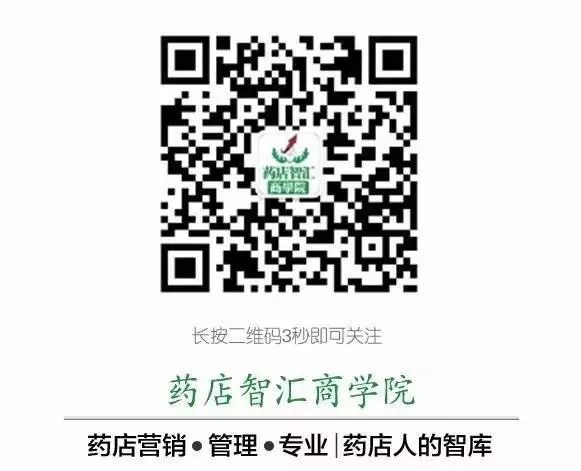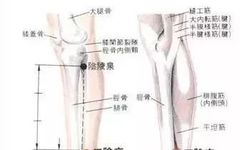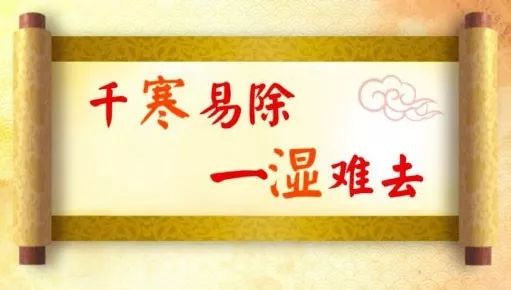
Introduction
Previously, we shared “Seven Chinese Herbs for Eliminating Dampness”, and many friends asked for recommendations on dampness-relieving Chinese patent medicines, so we have specially prepared today’s content.
There is a wide variety of Chinese patent medicines related to eliminating dampness available in pharmacies, covering a broad range of diseases and with considerable daily sales.
Chinese patent medicines related to eliminating dampness are not a single category of medicine; they are grouped together in this article specifically discussing “dampness evil”.
The methods for eliminating dampness mainly include four types: bitter drying dampness, aromatic transforming dampness, warming and transforming water dampness, and promoting urination to drain dampness. Based on these four methods, we can organize the related Chinese patent medicines.
1. Bitter Drying Dampness
Bitter flavor can dry, and dampness and dryness are opposing qi, analogous to the principle of “heat is treated with cold”. Naturally, “dampness is treated with dryness” becomes one of the methods to eliminate dampness.
The method of bitter drying is divided into treating cold dampness and damp-heat.
Cold dampness stagnating in the meridians may present symptoms such as joint pain, swelling, and sensitivity to cold; cold dampness obstructing the spleen may lead to cold limbs, abdominal pain, and diarrhea; cold dampness descending may result in clear vaginal discharge or difficulty urinating. Damp-heat accumulating in the spleen and stomach leads to symptoms such as abdominal distension, vomiting, and diarrhea;
Damp-heat obstructing the large intestine may cause diarrhea, dysentery, and hemorrhoids; damp-heat steaming the liver and gallbladder may present with jaundice, red urine, rib pain, and ear swelling with pus; damp-heat descending may result in yellow or burning painful vaginal discharge; damp-heat flowing into the joints may cause joint redness, swelling, and pain; damp-heat invading the skin may lead to eczema and damp sores.
Commonly used Chinese patent medicines applying the bitter drying method are as follows:
| Name | Composition | Main Functions | Contraindications |
| Danggui Kushen Wan | Danggui, Kushen, with honey and corn starch as excipients. | Cool blood and eliminate dampness. Used for sores on the face and head, acne, eczema, and rosacea caused by blood dryness and damp-heat. | Avoid smoking, alcohol, spicy, greasy, and fishy foods. |
| Er Miao Wan | Cangzhu, Huangbai. | Dry dampness and clear heat, used for damp-heat descending, eczema, and scrotal itching. | Avoid smoking, alcohol, spicy, greasy, and fishy foods. |
| Longdan Xiegan Wan | Longdan, Chaihu, Huangqin, Zhizi, Zexie, Mutong, Cheqianzi, Danggui, Dihuang, Zhi Gan Cao. | Clear liver and gallbladder, drain damp-heat. Used for dizziness, red eyes, tinnitus, ear swelling and pain, rib pain with bitter mouth, red and painful urination, and damp-heat vaginal discharge caused by liver and gallbladder damp-heat. | Pregnant women, elderly with weak constitution, and those with soft stools should use with caution; avoid spicy and irritating foods. |
| Liujunzi Wan | Dangshen, Baizhu, Fuling, Banxia, Chenpi, Gancao. | Tonify spleen and qi, dry dampness and transform phlegm. Used for spleen and stomach deficiency, low appetite, qi deficiency with excessive phlegm, abdominal distension, and loose stools. | Pregnant women should avoid; avoid raw, cold, greasy, and hard-to-digest foods. |
| Erchen Wan | Chenpi, Banxia (processed), Fuling, Gancao. With ginger as an excipient. | Dry dampness and transform phlegm, regulate qi and harmonize the stomach. Used for cough with excessive phlegm, chest and abdomen distension, nausea, and vomiting caused by phlegm-damp stagnation. | Avoid raw, cold, greasy, and hard-to-digest foods. |
| Zuguang San | Salicylic acid, benzoic acid, boric acid, Kushen. | Clear heat, dry dampness, kill insects, and stop sweating. Used for keratotic tinea pedis and hyperhidrosis caused by damp-heat descending. | Avoid raw, cold, greasy, and hard-to-digest foods. |
| Duhuo Jisheng Heji | Duhuo, Sangjisheng, Qinjiao, Fangfeng, Xixin, Danggui, Baishao, Chuanxiong, Shudihuang, Yaozhu, Chuan Niuxi, Dangshen, Fuling, Gancao, Guizhi, with ethanol as an excipient. | Nourish blood, relax tendons, and eliminate wind and dampness, used for cold pain in the waist and knees, and difficulty in bending and stretching caused by wind-cold-dampness obstruction. | Not for use by pregnant women. |
| Distinguishing Medication: | (1) Danggui Kushen Wan and Er Miao Wan are both primarily bitter cold medicines, drying dampness and clearing heat, treating symptoms caused by damp-heat evil. Their application is not limited to skin-related diseases mentioned in the instructions; they can also be combined with other medicines for many other diseases caused by damp-heat.
(2) Longdan Xiegan Wan is a representative medicine for clearing and draining liver and gallbladder damp-heat. Longdan enters the liver and gallbladder meridians, is bitter and cold, dries dampness, and drains liver and gallbladder fire, effective for both upward and downward damp-heat attacks on the liver meridian, but caution is needed as this medicine is very cold, and the syndrome must be accurately identified to avoid misuse. (3) Liujunzi Wan and Erchen Wan dry dampness, strengthen the spleen, and transform phlegm, representing medicines that dry dampness and transform phlegm while also regulating the spleen and stomach. (4) Zuguang San is an external drying dampness medicine, which also contains Western medicine components that stop sweating, effective for tinea pedis caused by damp-heat invasion. (5) Duhuo Jisheng Heji contains Duhuo, which is warm and bitter, can dry dampness, and dispel wind-cold. This medicine is a representative patent medicine for treating wind-cold-damp diseases, and the method of eliminating dampness in oral medicines and external medicines like pain-relieving plasters is primarily through the bitter drying method. |
2. Aromatic Transforming Dampness
“Earth loves warmth and delights in fragrance”; aromatic herbs can smooth the qi mechanism, transform damp turbidity, eliminate distension, and support the spleen and promote movement. Representative herbs include Cangzhu, Houpo, Huoxiang, and Peilan. Additionally, these herbs can also promote qi and open the meridians, facilitating the qi mechanism in the middle jiao, thus resolving damp stagnation.
Aromatic transforming dampness medicines are mostly warm and aromatic, which can easily consume qi and injure yin, so those with yin deficiency and blood dryness or qi deficiency should use them with caution.
Representative Chinese patent medicines for aromatic transforming dampness are as follows:
| Name | Composition | Main Functions | Contraindications |
| Huoxiang Zhengqi Shui | Cangzhu, Chenpi, Houpo (processed with ginger), Baizhi, Fuling, Dafu Pi, Sheng Banxia, Gancao extract, Guang Huoxiang oil, Zisu leaf oil | Release the exterior, transform dampness, and regulate qi and harmonize the middle. Used for exterior wind-cold, internal damp stagnation, or summer heat dampness causing cold symptoms such as headache, heaviness, chest fullness, abdominal distension, vomiting, and diarrhea; gastrointestinal type colds with the above symptoms. | Not suitable to take nourishing Chinese medicines simultaneously during treatment. Diet should be light. |
| Wushi Cha Keli | Cangzhu, Chaihu, Qianghuo, Fangfeng, Baizhi, Chuanxiong, Guang Huoxiang, Qianhu, Lianqiao, Chenpi, Shan Zha, Zhi Shi, Maiya (roasted), Gancao, Jiegeng, Liushenqu (roasted), Zisu leaf, Houpo, Hongcha | Release the exterior and harmonize the stomach. Used for exterior wind-cold, fear of cold with fever, internal food accumulation syndrome, nausea, vomiting, abdominal pain, and diarrhea. | Not suitable to take nourishing Chinese medicines simultaneously during treatment. Diet should be light. |
| Huoxiang Qushi Soft Capsules | Guang Huoxiang, Xiangnuo, Baizhi, Zisu leaf, Cangzhu, Dingxiang, Chenpi, Dafu Pi, Fa Banxia, Fuling, Shengjiang, Gancao. | Eliminate summer heat and transform dampness, release the exterior and harmonize the middle. Used for internal damp stagnation and summer heat causing cold symptoms such as fear of cold with fever, headache without sweating, fatigue, nausea, vomiting, abdominal pain, and diarrhea. | Not suitable to take nourishing Chinese medicines simultaneously during treatment. Diet should be light. |
| Jiawei Huoxiang Zhengqi Wan | Guang Huoxiang, Zisu leaf, Baizhi, Baizhu (roasted), Chenpi, Banxia (processed), Houpo (processed with ginger), Fuling, Jiegeng, Gancao, Dafu Pi, Shengjiang, Dazao. | Release the exterior, transform dampness, and regulate qi and harmonize the middle. Used for exterior wind-cold, internal damp stagnation, headache, heaviness, chest fullness, abdominal distension, vomiting, and diarrhea. | Not suitable to take nourishing Chinese medicines simultaneously during treatment. Diet should be light. |
| Qushi Pian | Guang Huoxiang, Zisu leaf, Fuling, Xiangwen, Sandalwood, Papaya, Dingxiang, Gancao. | Eliminate summer heat and disperse cold. Used for summer heat causing cold symptoms such as fear of cold with fever, headache, fatigue, chest and abdomen fullness, vomiting, and diarrhea. | Not suitable to take nourishing Chinese medicines simultaneously during treatment. Diet should be light. |
| Xiangsha Yangwei Wan | Muxiang, Sharen, Baizhu, Chenpi, Fuling, Banxia (processed), Vinegar Xiangfu, Zhi Shi (roasted), Cardamom (shelled), Jiang Houpo, Guang Huoxiang, Gancao. | Warm the middle and harmonize the stomach. Used for insufficient stomach yang and damp obstruction causing stomach pain, fullness, symptoms of stomach pain, discomfort, vomiting sour water, discomfort, lack of appetite, and fatigue. | Not suitable to take nourishing Chinese medicines simultaneously during treatment. Diet should be light. |
| Distinguishing Medication | (1) The formulations of Huoxiang Zhengqi series, Qushi Pian, and Wushi Cha Keli all contain both cold-dispelling and exterior-releasing medicines, as well as damp-transforming and harmonizing medicines, and can be used for summer dampness type colds caused by wind-cold; among them, Wushi Cha Keli has stronger lung-dispelling and cold-dispelling effects and also has digestive functions.
(2) Huoxiang Qushi Soft Capsules reduce Houpo compared to Huoxiang Zhengqi Shui, adding Dingxiang, Shengjiang, and Huoxiang, replacing Sheng Banxia with Fa Banxia. It targets “internal warm damp stagnation” and enhances the effects of drying dampness, warming the middle, and stopping vomiting; adding Huoxiang, (3) Jiawei Huoxiang Zhengqi Wan reduces Cangzhu compared to Huoxiang Zhengqi Shui, adding Baizhu, Jiegeng, Shengjiang, and Dazao, enhancing the effects of regulating the spleen and stomach. (4) Unlike the previous medicines that primarily target summer damp-heat colds, Xiangsha Yangwei Wan, while containing many aromatic transforming dampness herbs, does not include any wind-dispelling herbs, thus its overall effect is to tonify the spleen and stomach, transform dampness, and warm the middle. Compared to Shenling Baizhu Wan, both are spleen-tonifying and damp-draining medicines, but the former is more damp-oriented, focusing on treating cold dampness obstructing the spleen, while the latter has a neutral property, with a strong qi-tonifying effect, focusing on treating damp obstruction in the middle jiao leading to qi deficiency and loose stools. |
3. Representative Chinese Patent Medicines for Warming and Transforming Water Dampness
| Name | Composition | Main Functions | Contraindications |
| Bixie Fenqing Wan | Powdered Bixie, Shi Changpu, Gancao, Wuyao, Yizhi Ren | Separate clear from turbid, warm the kidneys, and drain dampness. Used for kidney not transforming qi, clear and turbid not separated, frequent urination, and white discharge. | Avoid greasy foods, tea, vinegar, and spicy stimulating foods. |
| Wuling Capsules | Zexie, Fuling, Zhu Ling, Rougui, Baizhu (roasted) | Warm yang, transform qi, and drain dampness. Used for water retention due to yang not transforming qi, presenting with difficult urination, water retention, abdominal distension, vomiting, diarrhea, and thirst without desire to drink. | Avoid greasy foods, tea, vinegar, and spicy stimulating foods. |
| Distinguishing Medication | (1) Bixie Fenqing Wan can warm the lower source, drain dampness, and transform turbidity, treating white discharge caused by lower jiao deficiency-cold, kidney yang deficiency, leading to qi transformation failure and clear and turbid not being separated, thus causing cloudy urine, even thick like paste. It is suitable for warming the kidneys, draining dampness, and separating clear from turbid, and should be taken with light salt water to enhance its effect on the kidneys and direct the medicine to the lower jiao.
(2) Wuling Capsules differ slightly from the ancient formula “Wuling San” in that it replaces Gui Zhi with Rougui, thus slightly reducing its water-dispelling effect while enhancing its warming kidney and assisting yang function. |
4. Representative Chinese Patent Medicines for Promoting Urination to Drain Dampness
| Name | Composition | Main Functions | Contraindications |
| Shenling Baizhu Wan | Ren Shen, Fu Ling, Bai Zhu (wheat fried), Shan Yao, Bai Bian Dou (fried), Lian Zi, Yi Yi Ren (fried), Sha Ren, Jie Geng, Gan Cao. | Strengthen the spleen and benefit qi. Used for fatigue, weakness, and low appetite with loose stools. | Do not take this medicine simultaneously with Li Lu, Wu Ling Zhi, Zao Jiao, or their preparations. Avoid tea and radishes to prevent affecting the efficacy of the medicine. |
| Compound Jin Qian Cao Granules | Guang Jin Qian Cao, Che Qian Cao, Shi Wei, Yu Mi Xu. | Clear heat, eliminate dampness, promote urination, and relieve pain. Used for urinary tract stones and urinary tract infections with damp-heat descending symptoms. | Avoid spicy and irritating foods. |
| Ba Zheng Heji | Qumai, Cheqianzi (roasted), Bianxu, Dahuang, Huashi, Chuan Mutong, Zhizi, Dengxin Cao, Gancao | Clear heat, promote urination, and relieve dysuria. Used for damp-heat descending, short and red urination, painful urination, and dry mouth and throat. | Avoid spicy and irritating foods. |
| Distinguishing Medication | (1) Shenling Baizhu Wan uses Yi Yi Ren and Fuling to drain dampness, supplemented by other spleen-strengthening and damp-transforming medicines, having the function of “draining urine to solidify stools”.
(2) Compound Jin Qian Cao Granules and Ba Zheng Heji not only have the effect of draining dampness but also possess heat-clearing properties, thus primarily treating damp-heat descending symptoms. |
5. Four Major Acupuncture Points for Strengthening the Spleen and Draining Dampness
The four major acupuncture points for strengthening the spleen and draining dampness are: Yinlingquan, Sanyinjiao, Zusanli, and Fenglong. These points occupy a significant position in the acupuncture clinical treatment of dampness-related diseases.
Yinlingquan and Sanyinjiao are spleen meridian points, effective for strengthening the spleen and draining dampness; Zusanli and Fenglong are stomach meridian points, with the spleen and stomach meridians being interrelated. Zusanli is the lower he point of the stomach, treating internal organs, and has the effect of regulating the spleen and stomach, while Fenglong is the connecting point of the stomach meridian, treating both internal and external meridian diseases. Regularly massaging these four points can improve your feeling of heaviness!
In daily life, in addition to massage, you can also try moxibustion on these four major points. A convenient method is using moxa sticks, where suspended moxibustion is most suitable for self-administration, including gentle moxibustion, sparrow-pecking moxibustion, and circular moxibustion.
Gentle Moxibustion: Light one end of the moxa stick and keep a certain distance from the acupuncture point, using the index and middle fingers spread on both sides of the acupoint to feel the degree of heat, generally moxibustion for 10-15 minutes per point.
Sparrow-Pecking Moxibustion: Light one end of the moxa stick and aim it at the acupuncture point, performing moxibustion in a pecking motion like a bird pecking rice, moving up and down. This should be done in rhythm with your breathing, generally moxibustion for about 15 minutes per point.
Circular Moxibustion: Light one end of the moxa stick and keep a certain distance from the acupuncture point, performing back-and-forth circular moxibustion. Generally moxibustion for 20-30 minutes.
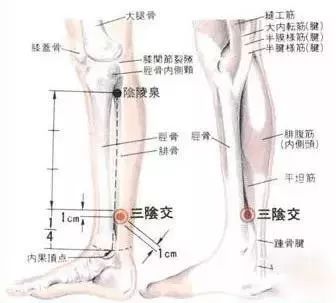
1) Yinlingquan
Location: Belongs to the foot Taiyin spleen meridian, located on the inner side of the lower leg, in the depression between the medial condyle of the tibia and the medial edge of the tibia.
Function: Strengthen the spleen, drain water, and open the three jiaos.
2) Sanyinjiao
Location: Belongs to the foot Taiyin spleen meridian, located on the inner side of the lower leg, 3 inches above the tip of the inner ankle, behind the medial edge of the tibia.
Function: Regulate and nourish the qi and blood of the liver, spleen, and kidney meridians, nourish yin and drain heat.
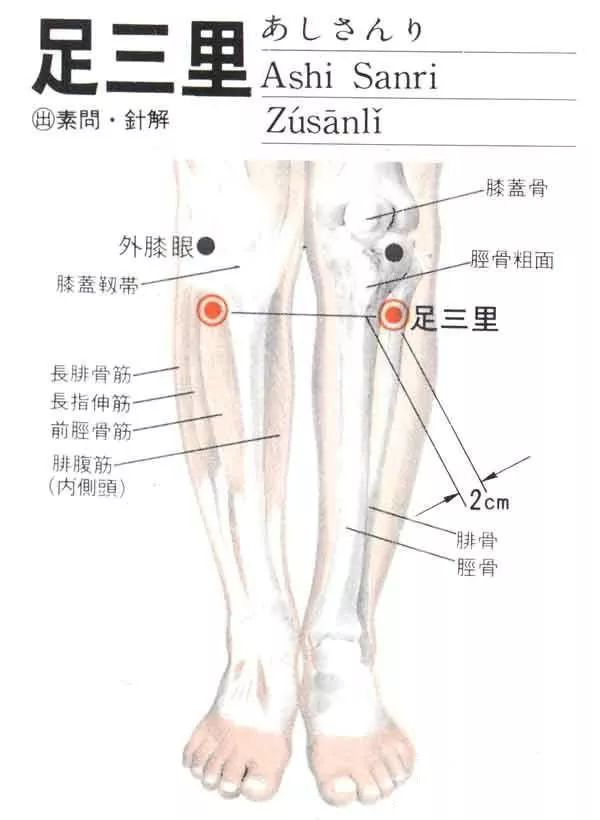
3) Zusanli
Location: Belongs to the foot Yangming stomach meridian, located on the outer side of the lower leg, 3 inches below the knee joint (outer knee eye), one horizontal finger (middle finger) away from the anterior edge of the tibia.
Function: Regulate the spleen and stomach, tonify deficiency, and transform dampness.
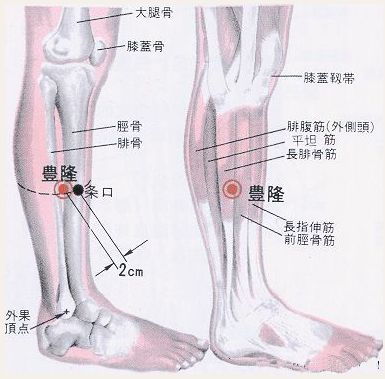
4) Fenglong
Location: Belongs to the foot Yangming stomach meridian, located on the outer side of the lower leg, 8 inches above the outer ankle, two horizontal fingers (middle finger) away from the anterior edge of the tibia.
Function: Harmonize the stomach, strengthen the spleen, transform phlegm, and drain dampness.
▶Follow Yao Dian Zhi Hui, making your pharmacy more professional and profitable than others.
